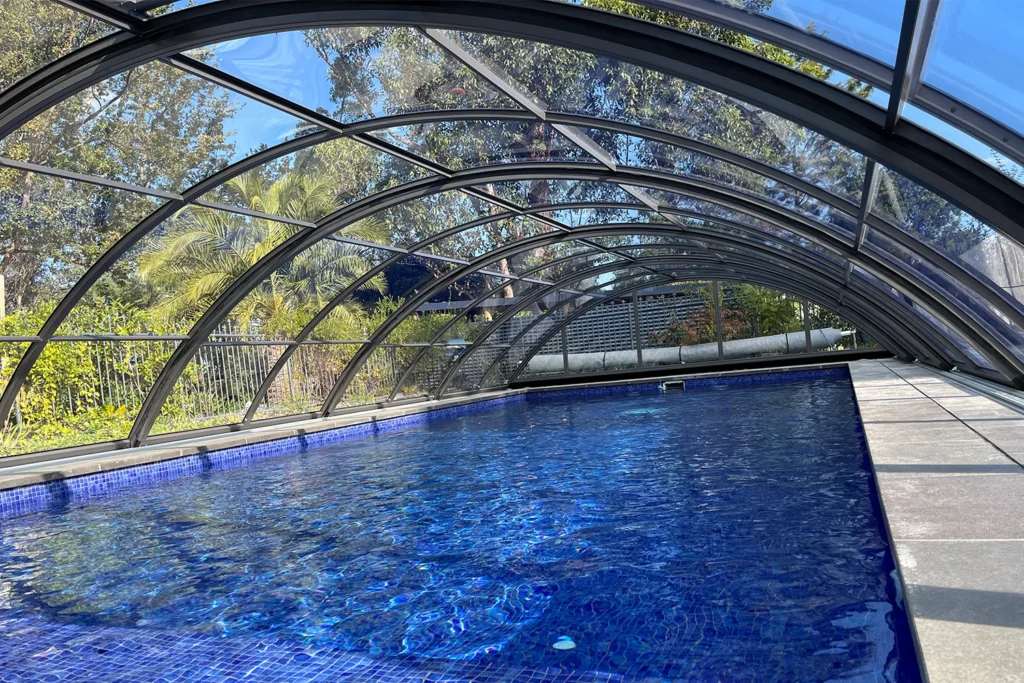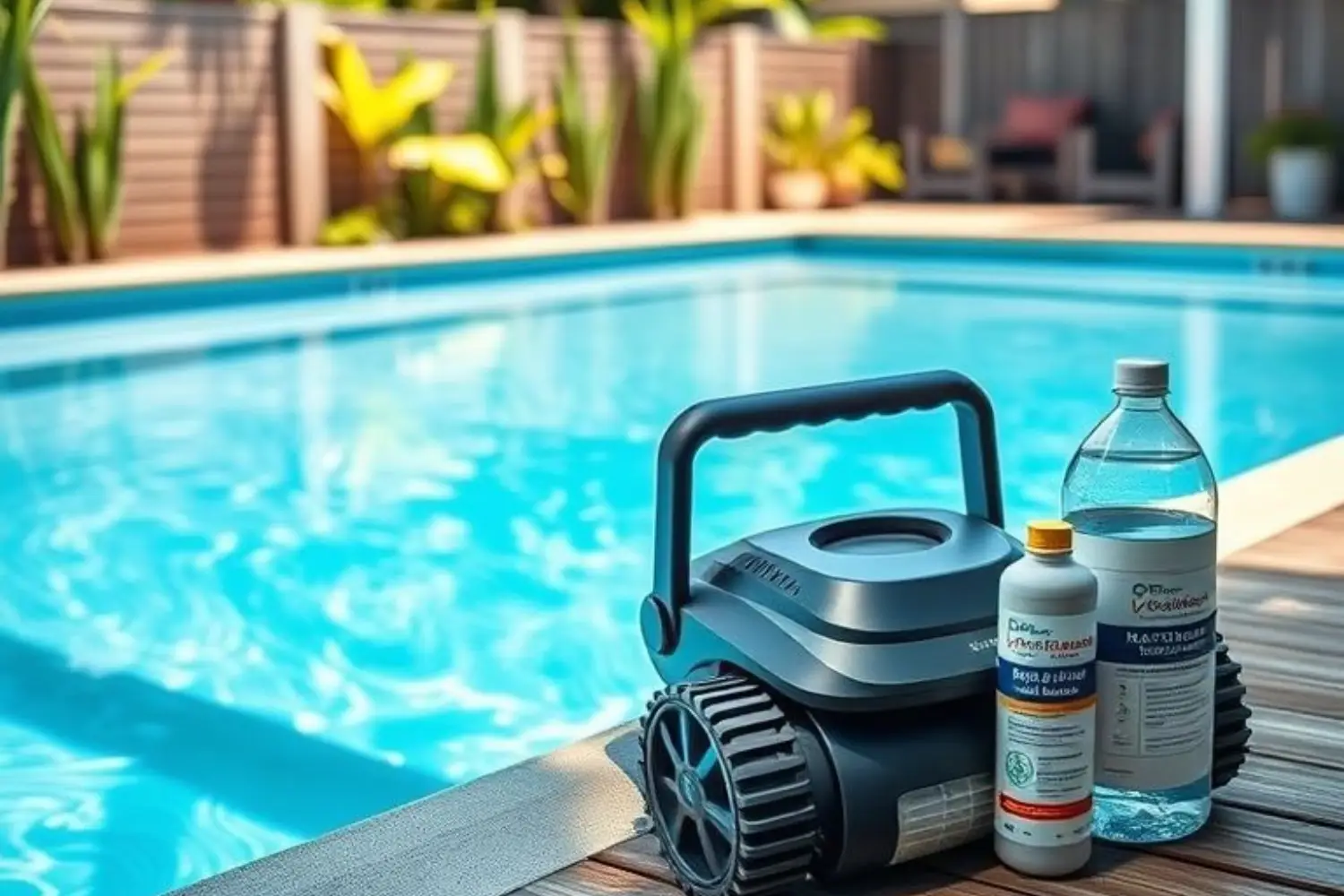Australian pool ownership provides endless summer enjoyment yet maintenance expenses create financial concerns. Pool owners experience substantial cost increases when their pools require maintenance repairs or equipment substitution. The positive aspect: the combination of intelligent system updates with basic maintenance practices enables users to reduce their energy expenses while decreasing chemical expenses and shortening their cleaning duration. The combination of variable-speed pumps, pool covers and enclosures produces dual benefits of financial savings and time savings. The money saved on maintenance expenses allows you to spend more time with your loved ones while enjoying your pool.
What Do Australians Actually Spend Annually on Pool Maintenance?
The annual maintenance costs for pool ownership range between $1,000 and $1,500 for standard upkeep. The yearly expenses include pump power consumption and chemical purchases and cleaning materials and scheduled maintenance inspections.
The annual costs for pool maintenance rise to $3,725 when you need to repair your pool frequently or require premium services. The combination of old equipment with weekly professional cleaning services and gas heating systems leads to increased expenses.
The middle ground provides the best solution but it is essential to save money for unexpected maintenance expenses to avoid costly surprises. The knowledge of how money is spent enables people to identify opportunities for cost reduction.
Quick Cost Table – Annual Maintenance Essentials
| Category | Estimated Annual Cost (AUD) | Notes |
| Pump Electricity | $960 – $1,320 | ~$80–$110/month in summer, ~$80 in winter |
| Heating (Solar, Electric, Gas) | $100 – $1,500 | Solar: $100–$200; Electric: $250–$750; Gas: $500–$1,500 |
| Professional Cleaning | $600 – $1,800 | Based on $60–$150 per visit; frequency varies |
| Chemicals & Consumables | $360 – $1,200 | ~$30–$100 per month for chemicals and balancing |
| Repairs & Parts Replacement | Varies | Can push total costs up to ~$3,725/year |
Pump electricity eats up the biggest chunk of ongoing costs. Heating comes next if the pool gets used in cooler months. Chemicals and professional cleaning round out the major expenses.
Factors That Influence Your Maintenance Bill
Pool Usage: Summer holidays mean non-stop swimming, which needs more cleaning and chemicals. Kids love cannonballs, but algae loves the debris they kick up. Families using their pools daily will spend considerably more on chemicals and cleaning than those who swim occasionally on weekends.
Climate Zone: Hot areas lose water fast through evaporation, running pumps harder. Cooler regions need heating to keep the water comfortable enough for swimming.
Equipment Efficiency: Old pumps use too much electricity, often costing double what modern units consume. Single-speed pumps waste energy because they can’t adjust to actual pool needs. Outdated filters and heaters also drive-up monthly bills without delivering better performance. Upgrading equipment feels expensive upfront but pays back through significantly lower running costs over several years.
Maintenance Routine: DIY saves money but takes time and know-how that not everyone has. Professional services cost more but remove the guesswork and backache from pool care.
7 Money-Saving Tips That Really Work
1. Install a Variable-Speed (ECO) Pump
The yearly operating cost of single-speed pumps reaches $1,200 because they maintain continuous full-power operation. The power output of variable-speed pumps adjusts automatically to match the current requirements of the pool. The pumps operate at reduced speeds for circulation during off-peak times while they increase their power for cleaning operations.
The installation of a variable-speed pump system leads to annual energy savings of $900. The amount of yearly savings depends on both the duration of pump operation and regional electricity rates. Pool owners can expect their initial investment to generate enough savings from reduced electricity expenses to become profitable within two to three years. The household budget receives direct financial benefits from savings after the initial investment period ends.
2. Use a Pool Cover
Pool covers prevent 95% of water from evaporating which results in both water preservation and financial savings. The reduced evaporation rate leads to decreased chemical loss and reduced need for water refills. Uncovered pools lose substantial amounts of water through evaporation during hot summer months.
Pool covers function as barriers which prevents leaves and bugs and dirt from entering the swimming pool. The filter requires less effort because it encounters minimal debris during operation. The protection of the pool during nighttime reduces cleaning duration to half of its original time. Pool owners who install covers report that their investment becomes profitable through lower chemical expenses and utility costs during their first swimming season.
3. Choose Solar Heating
The annual operating expenses for solar heating systems amount to $100 to $200 because sunlight offers free power. The operating costs for electric pool heating systems range between $250 and $750 while gas heating systems cost between $500 and $1500 annually. The difference in operating expenses between solar heating and other methods will lead to substantial financial savings during a typical ten-year period of pool ownership.
The cost of solar installation depends on roof availability and pool dimensions and ranges between $3,000 and $6,000. Modern systems include automatic shut-off features which prevent unnecessary energy consumption when water reaches the desired temperature. The panels require minimal upkeep while operating for extended periods without any additional expenses. The investment in solar panels yields the fastest return for homeowners who have suitable roof conditions and swim throughout the entire year.
4. Convert to Saltwater Chlorination
Saltwater systems generate chlorine autonomously which minimizes the need for manual chemical handling. Many pool users discover that the water produces a softer sensation on their skin and eyes.
The initial system investment leads to reduced expenses for future chemical purchases. The prolonged lifespan of swimwear occurs because saltwater treatment systems produce gentler conditions than traditional chlorine systems. The process of maintenance becomes easier because users need to handle fewer substances for water balance.
5. Add a Pool Enclosure

Pool enclosures provide superior protection than standard pool covers because they stop all debris from entering the pool area. The system reduces evaporation while maintaining heat retention which enables longer swimming seasons.
- The system prevents dirt from entering the pool area which results in reduced cleaning needs.
- The trapped heat in the enclosure system reduces heating expenses.
- The system requires fewer chemicals to maintain water equilibrium.
- The installation of enclosures leads to a 12°C temperature increase in pool water.
The initial cost of enclosures proves expensive but they generate substantial financial benefits throughout their operational period. Pool owners dedicate their time to swimming instead of performing cleaning duties.
6. Schedule Maintenance Smartly
The practice of regular filter cleaning stops costly emergency repairs from occurring in the future. Regular water chemistry tests performed weekly help prevent algae blooms from developing.
Early detection of minor issues enables their maintenance at affordable costs. The development of algae requires professionals to shock the pool and operate the pump for extended periods. Prevention efforts that last fifteen minutes always prove more effective than the long process of fixing problems.
Basic tasks that save money:
- Regular backwashing of filters according to schedule
- Check pH and chlorine levels weekly
- Remove leaves from the surface before they drop into the water
- Check equipment components for signs that indicate potential issues
7. Invest in a Robotic Cleaner
The robotic cleaning system picks up tiny particles which standard filtration systems fail to detect. The independent operation of these cleaners reduces strain on the primary pump system and filter unit.
The water quality improves when chemicals need less frequent application to achieve balance. The robot performs most cleaning duties which shortens the duration of pump operation. The price of robotic cleaners starts at under $1,000 and goes up to more than $3,000 based on features including wall climbing ability and programmable timer functionality.
The convenience of having a clean pool at home without any effort brings happiness to families who have busy lives. The time-saving aspect of owning one makes numerous owners feel satisfied about their purchase decision.
Why This Matters: Real Financial Peace of Mind
Australian pool maintenance expenses range from $1,000 to $2,000 annually yet specific equipment choices and maintenance practices determine the actual costs. Pool owners who understand all expenses can create financial plans to prevent unexpected expenses. The investment in variable-speed pumps along with pool covers leads to reduced utility expenses which generate a return on investment. Regular maintenance work stops minor problems from developing into major costly emergencies. The implemented strategies enable families to spend their time swimming in their pool rather than stressing about upcoming maintenance expenses. When you manage your pool expenses properly you can enjoy a stress-free summer season.
Spend less time cleaning and more time swimming. Pool enclosures cut maintenance costs, keep water warmer, and protect against debris. Explore our enclosures and start saving today.
